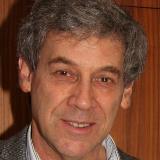
Voices

Homelessness: It’s never what you think
GEOFF SIFRIN
At the recent Kingsmead Book Fair, hosted at Kingsmead College – an elite girls-only school in upmarket Melrose, Johannesburg – one of the most moving panel discussions focused on a film called Vaya, about homelessness. The panel included the director, Akin Amotoso, and Anthony Mafela, a once-homeless man.
Vaya tells the true stories of rural people from KwaZulu-Natal (KZN) coming to the city, who land up in desperate situations.
After the speakers’ presentations, a sincere question came from an obviously privileged white woman in the audience: “What is it like to be homeless?” The panellists skirted the question. How to describe having nothing to someone with everything?
Historically, Jews’ cultural legacy contains memories of poverty – moving from rural villages to cities, and country to country, surviving as poor, uneducated people among strangers. Jews have largely “made it” in this country, but an instinctive understanding of homelessness lingers.
Vaya portrays real-life stories of three homeless people – the kind drivers might glimpse from car windows. A taste of the underbelly of Johannesburg, one of the world’s most unequal cities, exists alongside mainly white, middle-class suburbs like Glenhazel, Sandton or elsewhere.
The script is crafted from an initiative, the Homeless Writers’ Project, started in 2009. It opens with three hopeful people on a train from rural KZN to Johannesburg. Each one expects help from family, but finds themselves alone and in danger. The first, Nhlanhla, has no money for lobola to marry Sihle in KZN, so he is going to Joburg to make money after a cousin offers him a job. He is quickly trapped into the world of gangsters, becoming a killer dependent on gang bosses.
The second, the beautiful Zanele, comes to the city with her friend’s child, wanting to be a dancer. She finds herself – and the child – on the point of being sold into the illegal trade in women. The third, Nkulu, has come to fetch his migrant-worker father’s dead body from the mines, to take home to his KZN family for the ancestors’ sake. He discovers that his father had built a second family in the city. This leaves Nkulu in limbo in Johannesburg.
In streets leading up to Kingsmead College on the day of the fair, there were parked rows of gleaming 4x4s and barefooted beggars in dirty rags hung around the school entrance.
The exploration into “underground” Johannesburg includes an intriguing book series by Tanya Zack and photographer Mark Lewis called Wake Up, This is Joburg, published by Fourthwall Books. It tells stories of 10 inhabitants in the city’s so-called alternative economy. One depicts “survivors” carving out a precarious living chopping up S’kop – cows’ heads rejected by traditional butcheries – under the highways and in abandoned buildings, invisible to ordinary Johannesburg residents. They fly by the seat of their pants, among xenophobia and a changing city.
What do the visitors to the Kingsmead Fair – and the readers of this column – with roofs over their heads and cars in their garages, make of this other, invisible world? At least the sense that the ragged people at their car windows have stories as relevant to this city as theirs.




